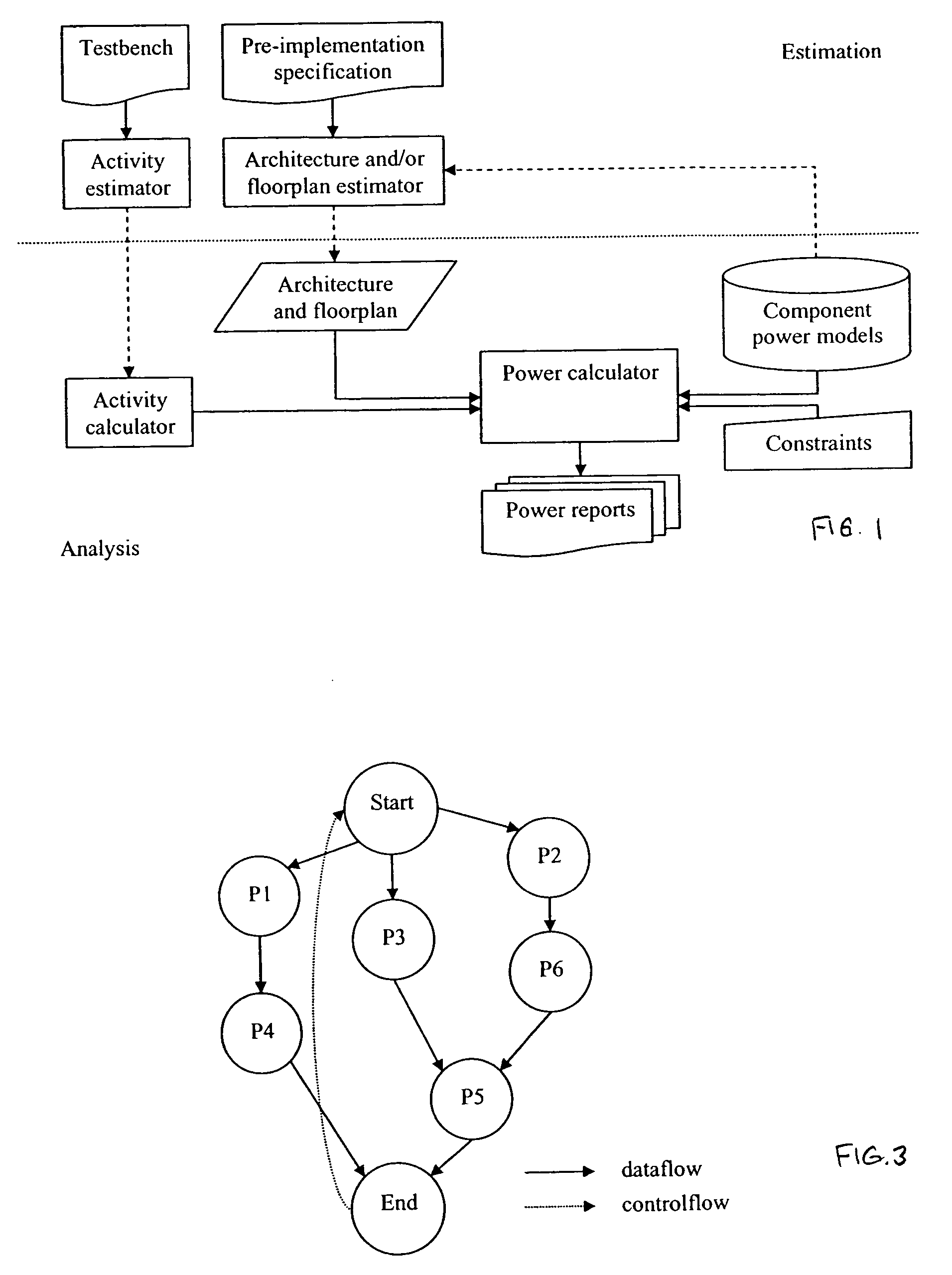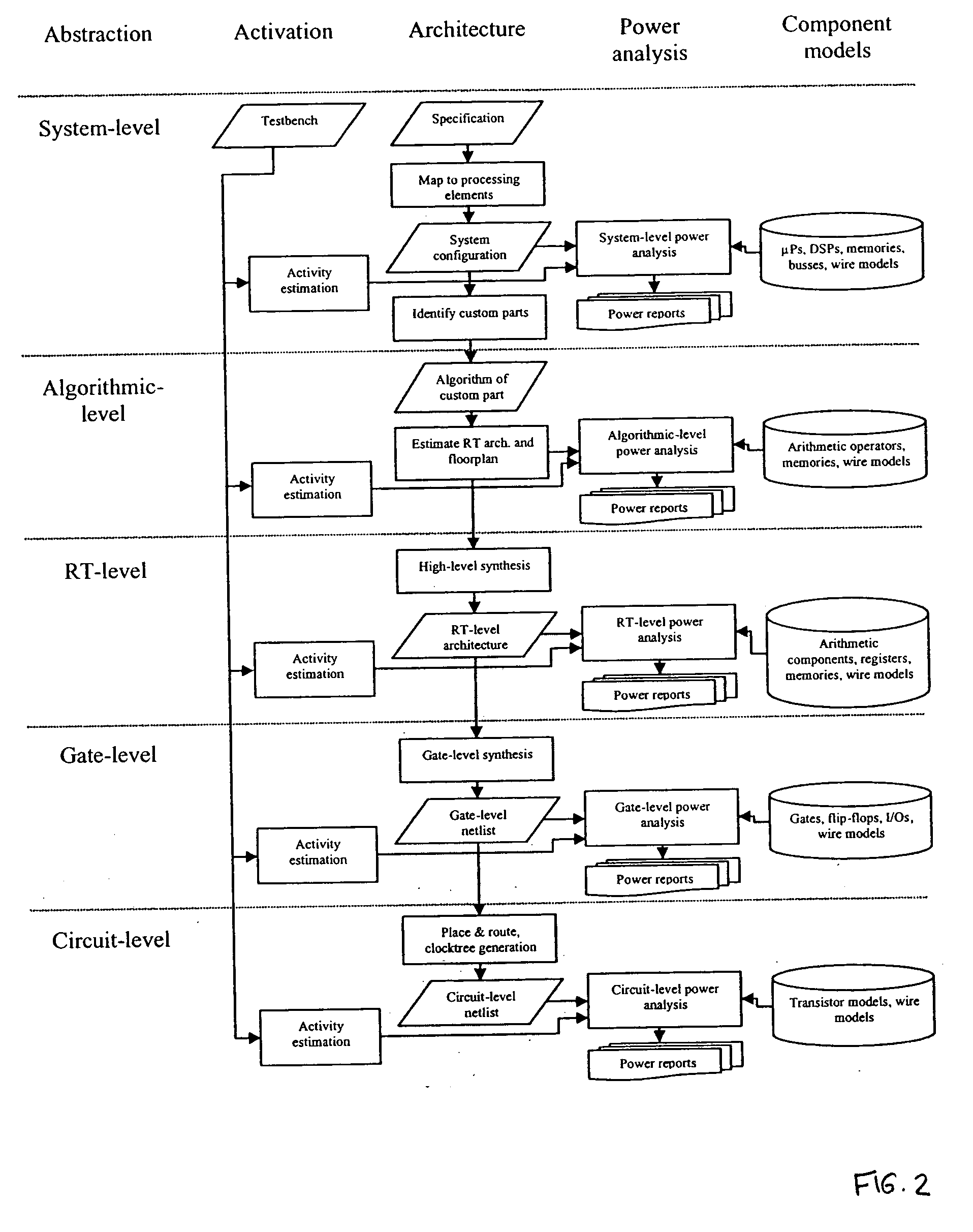Predictable design of low power systems by pre-implementation estimation and optimization
- Summary
- Abstract
- Description
- Claims
- Application Information
AI Technical Summary
Benefits of technology
Problems solved by technology
Method used
Image
Examples
Embodiment Construction
Analysis vs. Estimation
[0027] It is useful first to clarify two concepts, namely, “estimation” and “analysis.” Analysis is based on an existing design at any level, i.e. the structure is given, typically in terms of a netlist of components. These modules are predesigned and for each one a power model exists. These power models can be evaluated based on the activation of the modules. Hence, power analysis is the task of evaluating the power consumption of an existing design at any level. It is used to verify that a design meets its power and reliability constraints, e.g. no electromigration occurs, no hot spots will burn the device, and no voltage drops will cause spurious timing violations. Power analysis finally helps to select the most cost efficient chip package.
[0028] In contrast, estimation builds on incomplete information about the structure of the design or part of the design under consideration. The design does not yet exist and can only be generated based on assumptions ...
PUM
 Login to View More
Login to View More Abstract
Description
Claims
Application Information
 Login to View More
Login to View More - R&D
- Intellectual Property
- Life Sciences
- Materials
- Tech Scout
- Unparalleled Data Quality
- Higher Quality Content
- 60% Fewer Hallucinations
Browse by: Latest US Patents, China's latest patents, Technical Efficacy Thesaurus, Application Domain, Technology Topic, Popular Technical Reports.
© 2025 PatSnap. All rights reserved.Legal|Privacy policy|Modern Slavery Act Transparency Statement|Sitemap|About US| Contact US: help@patsnap.com



